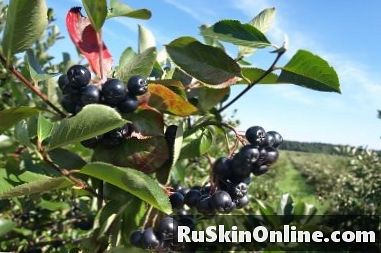
Content
- Aronia plants thrive wonderfully in the German climate
- Which location is optimal?
- Which soil qualities does the shrub need?
- How do I best plant my aronia shrub?
- At which distance should I put the shrubs?
- When should I plant an aronia shrub?
- How often should I water and / or fertilize?
- When and how should I prune the shrub?
- What diseases are there and what can I do about it?
- When does the shrub blossom and how is the fertilization done?
- When can I harvest?
- I want to multiply my Aroniasträucher. What do I do best?
- What do I have to do in winter?
- Tips & Tricks

Aronia plants thrive wonderfully in the German climate
Originally from North America, aronia shrubs thrive excellently in Central European and North German climates. The plant is considered easy to maintain and delivers high yields. The fruits, which are similar to blueberries, have a sour-sweet taste and contain a lot of vitamins and are also rich in iron and antioxidants. Aronia berries can be processed in many ways.
Which location is optimal?
Optimal is a sunny or partially shaded location.
Which soil qualities does the shrub need?
The aronia shrub is both undemanding and very adaptable: it grows and thrives on almost all soils. Low-nutrient soils can be enriched with compost fertilizer and / or humus for the best possible growth. The plants like moist soil, but also thrive on sandy or loamy soil. Plants on sandy soils should be watered frequently, while loamy soil should avoid waterlogging. Even slightly saline or acidic soils do not harm the aronia shrub. The ideal pH is between 6.0 and 6.5.
How do I best plant my aronia shrub?
The aronia shrub is a deep root, so you should thoroughly dig and loosen the soil before planting. Now dig a planting hole about twice the size of the root ball. Pour the bale with loose soil and press firmly. Make sure that the root ball is covered with soil. However, the plant should not be too deep in the ground. Then water the plant abundantly. With well-rooted pot shrubs, it makes sense to soak the root ball with water before planting.
At which distance should I put the shrubs?
Depending on the variety, a planting distance between one and one and a half meters is recommended. Large varieties such as Rubina even need a distance of 1.80 meters. If a hedge is to be planted, you should choose a distance of about half a meter.
When should I plant an aronia shrub?
Aroniasträucher are commercially available as "root-bare" shrubs or as already well-rooted pot shrubs. Root-bare shrubs should be planted at the end of winter. However, the prerequisite is that there is no more ground frost. Well rooted plants can also be used in the summer, but then bear no fruit in the same year. However, the ideal time for planting is autumn or late autumn.
How often should I water and / or fertilize?
The aronia shrub is very easy to care for: usually you do not have to fertilize it very rarely. Even regular watering is not really necessary, unless the summer is very hot and dry.
When and how should I prune the shrub?
A blend is only rarely necessary. The first time you should cut your aronia shrub after about four to seven years. The optimum time for this can be recognized by the growth width: If the shrub is so wide that no flowers are formed inside it, it is time for a cut. This occurs at best in late autumn.
What diseases are there and what can I do about it?
The shrub is extremely robust and rarely develops diseases.
When does the shrub blossom and how is the fertilization done?
The blossom of the chokeberry takes place in May.For about 10 days pure white flowers can be seen. The shrub is self-pollinated, but is also liked by bees. Fertilization by bees, bumblebees and other insects results in higher fruit yield. For this reason, it may be worthwhile for beekeepers to set up their bee wagons near these shrubs.
When can I harvest?
Usually, an aronia plant bears the first fruits from the second year. The main harvest time is from the end of August until well into September.
I want to multiply my Aroniasträucher. What do I do best?
Aronia shrubs can easily be propagated through their fruits, but also via cuttings and so-called Wurzelschosser. For the cultivation of new shrubs you collect the seeds from the fruits. You can use these seeds in pots on the windowsill to attract new plants. However, it is easier to propagate via cuttings, and even easier over already rooted rootstock. Cuttings or Wurzelschosser should in the spring, even before knocking, remove.
What do I have to do in winter?
Also in this regard aronia shrubs are extremely easy to maintain. Most varieties survive even hard winters with temperatures of up to - 35 ° C very well. Also, freezing rain, snow and other cold inconveniences do not harm the plant. However, you can protect the earth with fir branches, coconut or cork mats frost-resistant and thus better protect your plants.
Tips & Tricks
To grow a bushy aronia hedge, you should prune the shrubs in the first and second year. For this it is sufficient to shorten the basic drives. However, a strong pruning is not recommended, because otherwise no flowers and thus no fruits are formed in the following year.